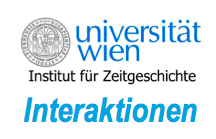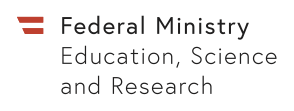Events
The Vienna Wiesenthal Institute for Holocaust Studies (VWI) organises academic events in order to provide the broader public as well as an expert audience with regular insights into the most recent research results in the fields of Holocaust, genocide, and racism research. These events, some of which extend beyond academia in the stricter sense, take on different formats ranging from small lectures to the larger Simon Wiesenthal Lectures and from workshops addressing an expert audience to larger international conferences and the Simon Wiesenthal Conferences. This reflects the institute’s wide range of activities.
The range of events further extends to the presentation of selected new publications on the institute’s topics of interest, interventions in the public space, the film series VWI Visuals, and the fellows’ expert colloquia.
| VWI invites/goes to... | |||
| Maayan Armelin: Leadership Styles And Social Relations in the SS-Einsatzgruppen | |||
Thursday, 25. March 2021, 12:00 - 13:30 Online-Webinar: https://us02web.zoom.us/j/86580559546?pwd=V24yelJtUHRNSkw1VjZBemk1S21WQT09
|
|||
VWI goes to the University of Vienna
Social hierarchies and operational structures added to the brutality of the Einsatzgruppen. Each unit comprised members of all the different institutions under the RSHA: the SD (SS intelligence), Gestapo (secret police), Kripo (criminal police), Waffen-SS (armed SS), drivers, cooks, and interpreters. These institutions determined the members’ age, experience, professionality, and job allocation, their levels of autonomy and agency, and their place in the unit’s hierarchy. Perpetrating executions, the men operated in small, mixed-background squads, of which thte makeup changed frequently. Belonging to these groups demanded of the members that they prove their loyalty by adopting new standards of violence, while lessening their ability to defy orders. The interaction between military traditions, leadership styles, social hierarchies, and operational structures encouraged Einsatzgruppen members to engage in mass violence. Understanding how these factors facilitated genocide helps in the analysis of current paramilitary groups who engage in mass violence against civilians and contributes to the efforts to alleviate present conflicts or prevent future ones. Commented by Bertrand Perz Maayan Armelin is a VWI junior fellow and a PhD candidate at the Strassler Center for Holocaust and Genocide Studies at Clark University. She earned a BA in History and Psychology and an MA in Social Psychology from the University of Haifa, where she worked at the Strochlitz Institute for Holocaust Research and on the editorial board of The Journal of Holocaust Research. Armelin has received fellowships from the Claims Conference (2014–2019), EHRI (2017–2018), and the Guggenheim Foundation (2020–2021) and presented her work at workshops and conferences in the fields of Holocaust history, genocide studies, and social psychology. Bertrand Perz has been Professor of Contemporary History at the Institute for Contemporary History at Vienna University since 2017. He has been a university assistant there since 2002 and an associate professor since 2013. Together with Kerstin Jobst, Bertrand Perz is spokesperson of the research area “Dictatorships – Violence – Genocides” at the Faculty of History and Cultural Studies and President of the Austrian Society for Contemporary History. He works primarily on the history and aftermath of National Socialism and the Holocaust. Photo: “The Last Jew of Vinnitsa”, July 1941, a member of the Waffen-SS shoots a Jew at a mass grave in Vinnitsa, Ukraine. Yad Vashem Photo Archive, Jerusalem. 2626/4 |
|||







 Mass executions across the Nazi-occupied Soviet Union marked the first stage of systematic annihilation during the Holocaust. The SS-Einsatzgruppen, mobile paramilitary units, murdered over a million and a half civilians, shooting them on the margins of cities and in pits in the hearts of forests and fields. This presentation will discuss the leadership styles practised by the Einsatzgruppen officers, particularly the social hierarchies in the units, and how they enhanced the members’ apparent willingness to perpetrate mass murder. Spotlighting three units, the Einsatzgruppen members’ postwar testimonies reveal that their officers followed the German military tradition of
Mass executions across the Nazi-occupied Soviet Union marked the first stage of systematic annihilation during the Holocaust. The SS-Einsatzgruppen, mobile paramilitary units, murdered over a million and a half civilians, shooting them on the margins of cities and in pits in the hearts of forests and fields. This presentation will discuss the leadership styles practised by the Einsatzgruppen officers, particularly the social hierarchies in the units, and how they enhanced the members’ apparent willingness to perpetrate mass murder. Spotlighting three units, the Einsatzgruppen members’ postwar testimonies reveal that their officers followed the German military tradition of 
